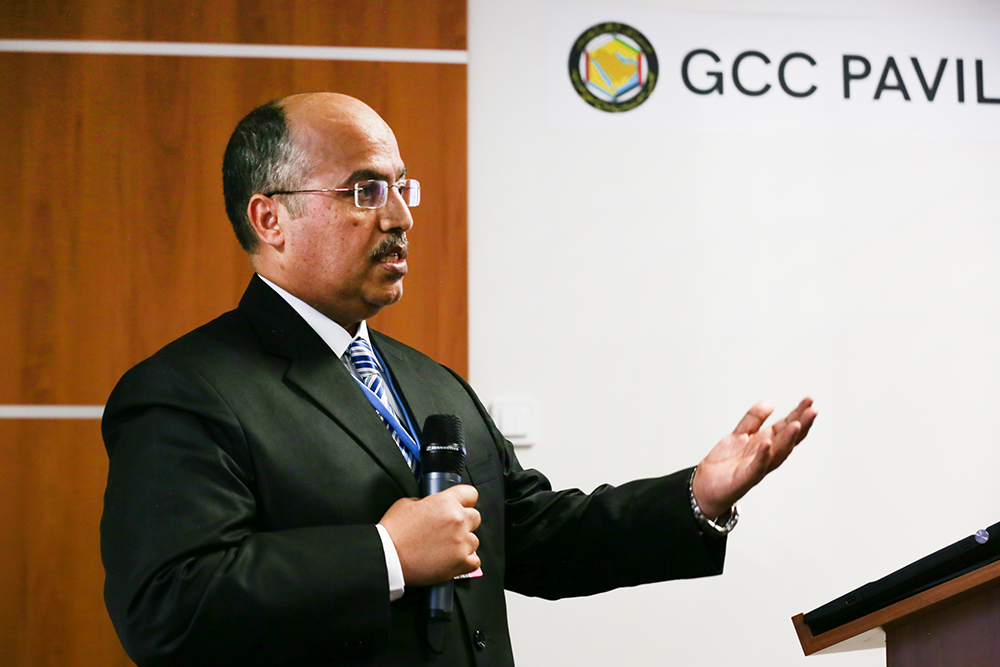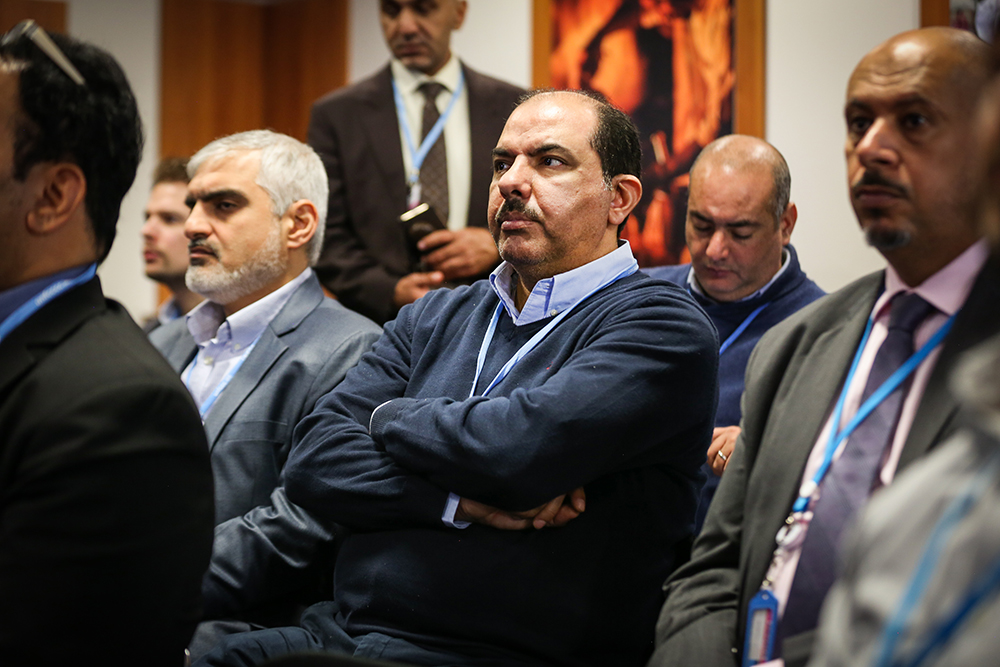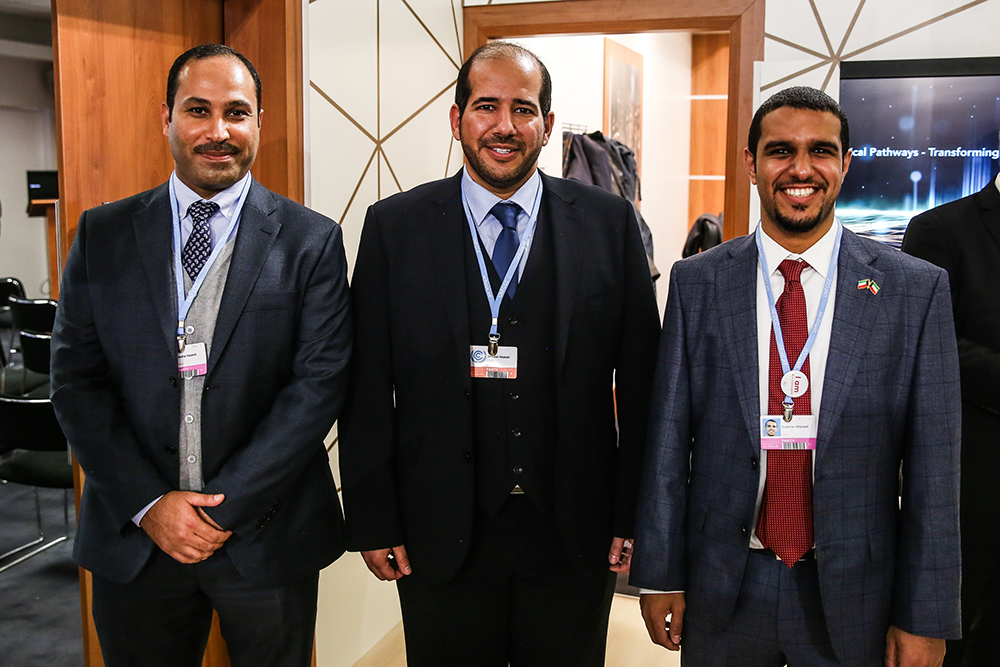Summary
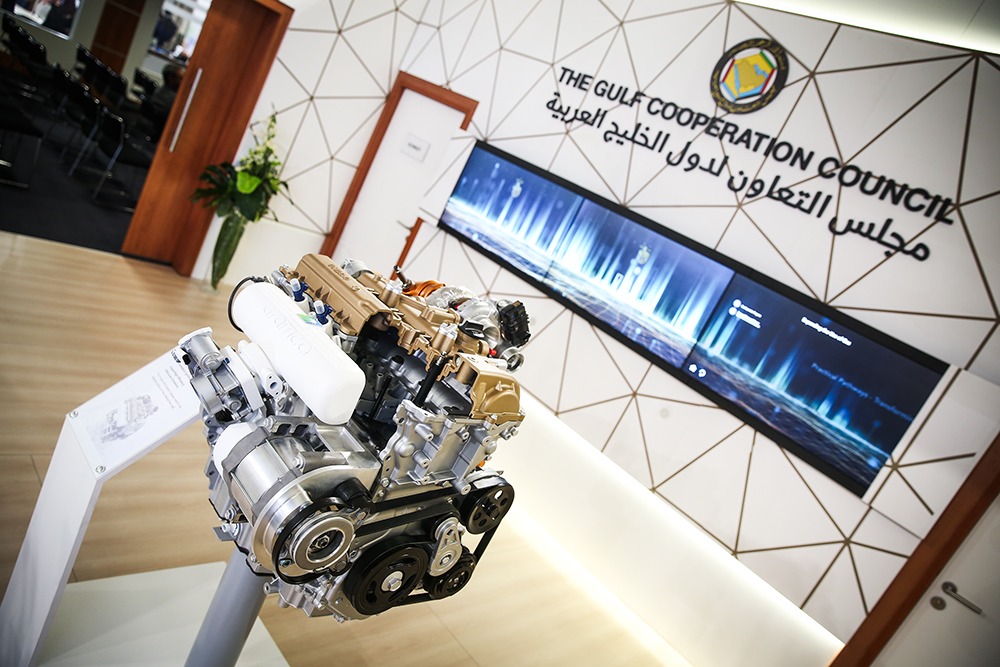
 IISD Reporting Services, through its ENB+ meeting coverage, is providing coverage of selected GCC Pavilion events at the Katowice Climate Change Conference - December 2018, including written, digital and video coverage.The following events were covered by IISD Reporting Services on Tuesday, 11 December 2018:
IISD Reporting Services, through its ENB+ meeting coverage, is providing coverage of selected GCC Pavilion events at the Katowice Climate Change Conference - December 2018, including written, digital and video coverage.The following events were covered by IISD Reporting Services on Tuesday, 11 December 2018:
- Carbon Capture Utilization and Storage (CCUS) Technologies
- Renewable Energy Initiatives through Economic Diversification with Mitigation Co-Benefits
Photos by IISD/ENB | Natalia Mroz / Diego Noguera
For photo reprint permissions, please follow instructions at our Attribution Regulations for Meeting Photo Usage Page
Carbon Capture, Utilization and Storage (CCUS) Technologies
Presented by the Kingdom of Saudi Arabia
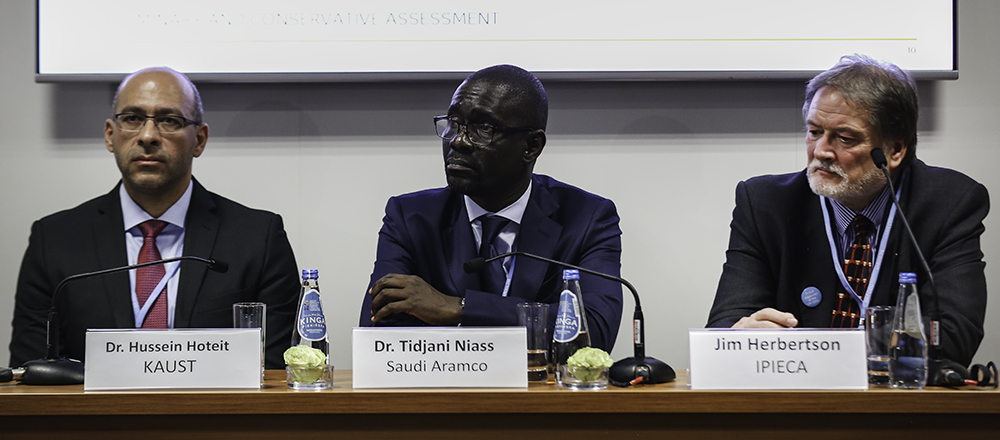
Posted by IISD Reporting Services on Wednesday, 12 December 2018
This panel considered the feasibility of carbon capture, utilization and storage (CCUS) technologies in the oil and gas industry, as well as the ways in which the panelists’ organizations have applied them as carbon emission reduction strategies. In the industry, CCUS involves the capturing of carbon emissions at source to sequester it underground, or to transform and utilize it as alternative marketable products. Hussein Hoteit, KAUST, moderated the panel.
Tidjani Niass, Saudi Aramco, presented on Saudi Aramco’s efforts to promote CCUS technologies. Highlighting that CCUS is a critical technology for achieving climate targets, he said, “without CCS, long-term global climate goals may be unobtainable.” He then outlined the value of CCUS for the low-carbon economy, saying that CCUS does more than reduce emissions, for example: through meeting energy demand growth sustainably; decarbonizing energy intensity; balancing intermittent renewable energies; creating and maintaining jobs; and improving energy security. Niass noted that 18 large-scale facilities are already in operation. He said that momentum for commercializing CCUS is picking up, but stressed the need to accelerate its deployment. Highlighting various ongoing CCUS initiatives such as the Oil and Gas Climate Initiative, he concluded by emphasizing that:
- CCUS is not an option, rather it is critical for achieving global climate objectives;
- CCUS technology is ready for use;
- effective and stable market mechanisms are urgently needed; and
- collaboration between all stakeholders is key to promoting CCUS.
In his presentation titled “Making CCS Fly,” Jim Herbertson, IPIECA, reported back on his organization’s initiatives of attempting to scale and develop carbon capture and sequestration initiatives. He mentioned that energy is at the center of every challenge faced by the global community and argued that the transition to a low-carbon economy will likely play out over the coming century, including oil and gas in the global energy mix. He linked the ways in which the oil and gas industry can map onto the Sustainable Development Goals (SDGs), including: access to energy (SDG 7); responsible consumption and production (SDG 12); and climate action (SDG 13). He outlined that IPIECA believes that CCUS offers opportunities across sectors, and has engaged with the subject since 2003, the last workshop of which engaged on the collaborative deployment of CCUS across the industry and the diversification of business models to deal with the specific infrastructure required for CCUS management. Herbertson concluded by claiming that CCUS is a necessary development, given that the Intergovernmental Panel on Climate Change (IPCC) Special Report on Global Warming of 1.5ºC (SR15) suggests that removing it from an energy transition portfolio would significantly increase mitigation costs if global emissions mitigation strategies detailed in nationally determined contributions (NDCs) are not immediately deployed.
Zaour Israfilof, Saudi Basic Industries Corporation (SABIC), presented on the SABIC approach to corporate carbon management, saying that SABIC has been a leader in promoting sustainability and climate change management in the GCC region. Highlighting that the company’s approach to climate change is the basis of the SABIC 2025 Strategy, he underscored the importance of addressing the risks of not reacting to climate change impacts on the business sector, noting the company’s goal and target to reduce greenhouse gas and energy intensity by 25%, respectively, by 2025 based on 2010 levels. Israfilof highlighted SABIC’s work, including: CO2 utilization plants, which supply CO2 for converting into valuable materials such as urea and methanol, and for the beverage industry; two Clean Development Mechanism projects on energy efficiency through improving boiler optimization; building a cleaner supply chain, including through the introduction of the world’s first low-emission Liquid Natural Gas carriers; investing in renewable feedstocks; and a “Home of Innovation” initiative which promotes Leadership in Energy and Environmental Design Platinum rated homes in the Middle East, aiming to achieve a net-zero energy balance using renewable energy.
In the ensuing discussion, participants discussed whether the necessity of CCUS is compatible with broader social realities, raising the issue that the IPCC SR15 does present pathways that avoid CCUS deployment. One participant questioned the feasibility of deploying CCUS at a large scale given present demonstrability, as well as the long-term effects of carbon utilization, considering that methanol or plastics eventually return carbon into the atmosphere. Panelists replied by arguing that it would be unfeasible to remove oil and gas from the global energy mix without incurring significant costs in infrastructure and behavioral changes.
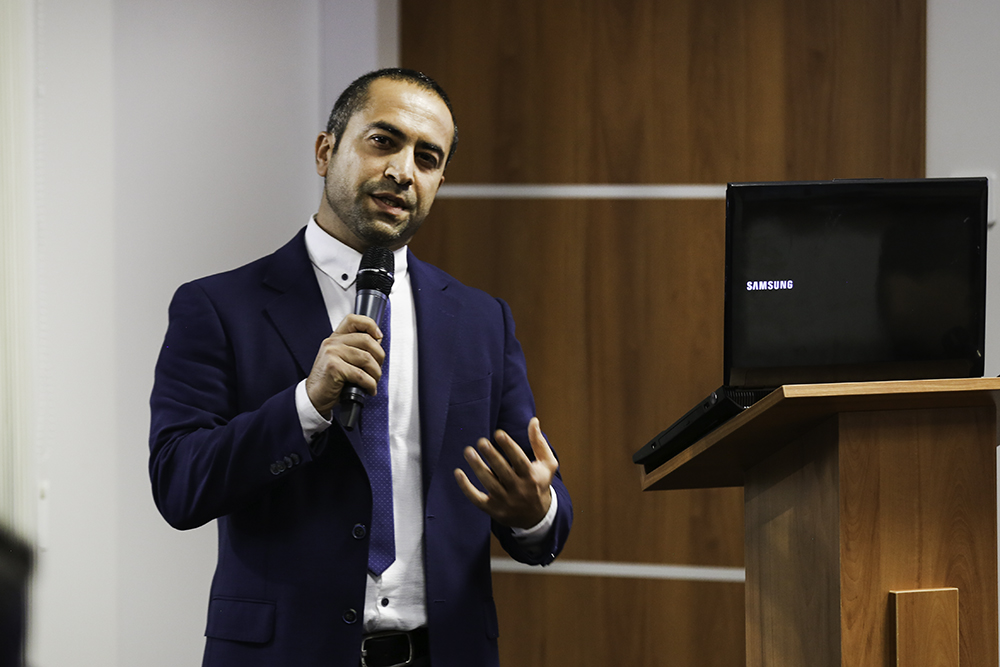

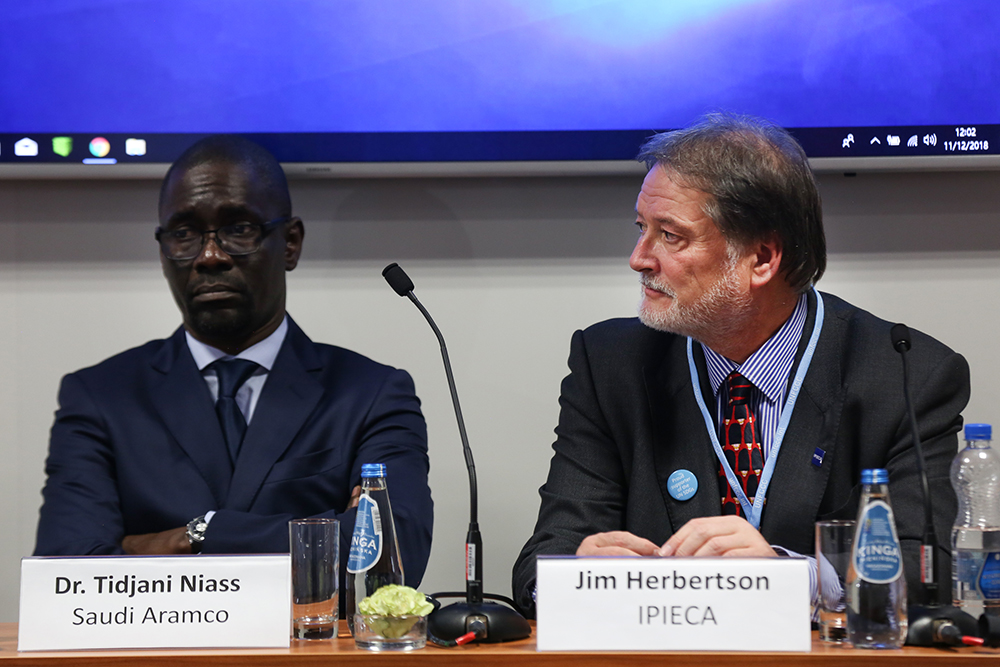



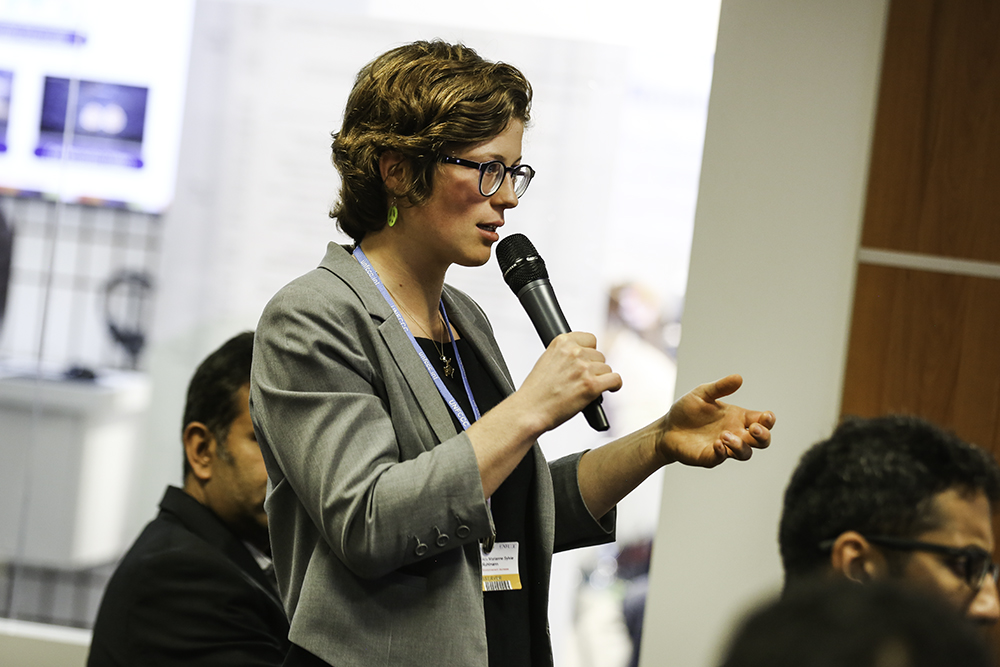
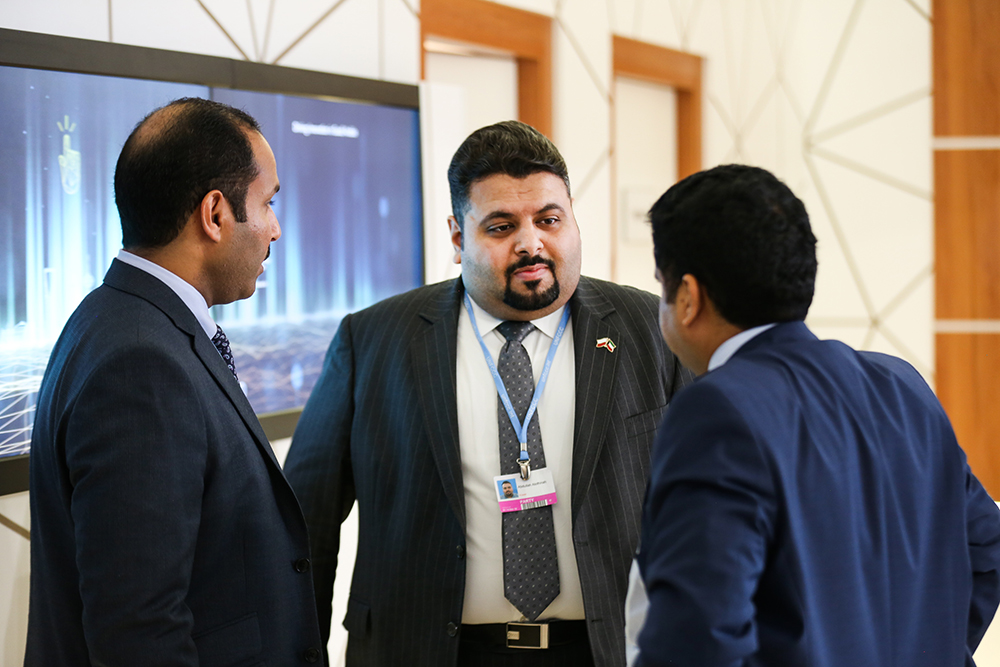

Participants interact after the event
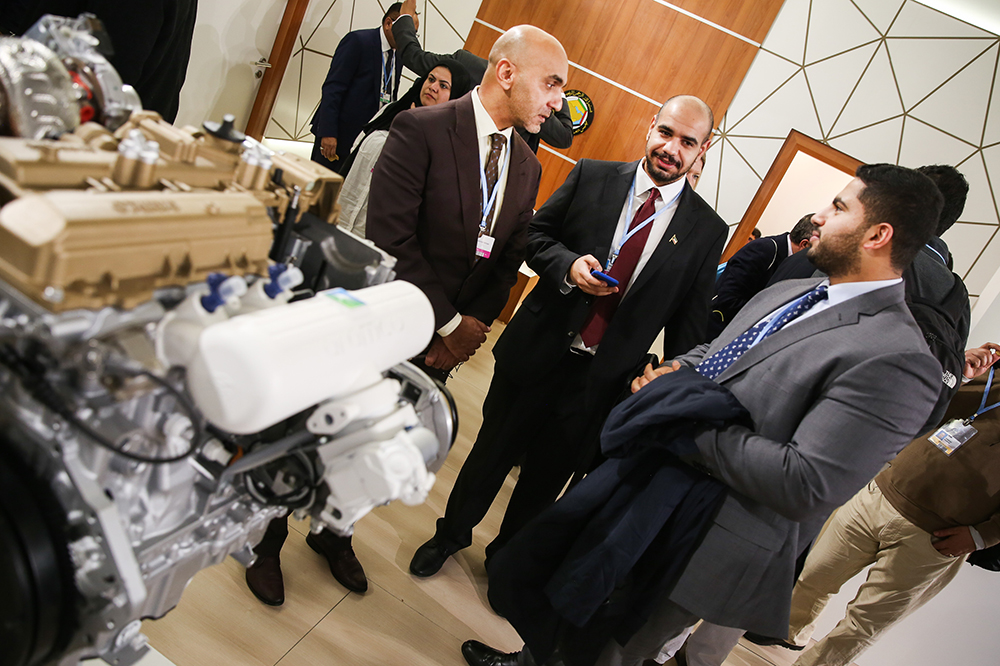
Renewable Energy Initiatives through Economic Diversification with Mitigation Co-Benefits
Presented by the Kingdom of Saudi Arabia

This panel, moderated by Mani Sarathy, King Abdullah University of Science and Technology (KAUST), considered the use of renewable energy technologies, such as solar photovoltaics (PV) and electricity generation through wind turbines to build low-carbon energy sources within the GCC region, and the mitigation co-benefits which emerge from these developments. Panelists presented their companies’ investments in renewable energy projects, and discussed the technical requirements and economic feasibility of these investments in light of the present high-carbon energy production mix in the GCC region.
Sulaiman Altaneeb, KNPC, introduced the Al-Shagaya project, derived in the Shagaya area of Kuwait, and introduced as a result of Kuwait’s commitments after the Doha 2012 UN Climate Change Conference of Parties (COP) to reach an energy mix of 15% renewables by 2030. He specifically introduced the Al-Dibdibah Solar Project, the second of three phases in the Al-Shagaya project. Constructed over an area of 32 square kilometers, the Al-Dibdibah project is divided into five Solar Generating Units of solar PV panels which will generate power to be sold to the Kuwait Ministry of Electricity and Water. He anticipated that the project will result in reductions of 2.1 million tonnes of CO2-equivalent per year, and generate 3150 GWh by the project’s 25th and final year. Altaneeb also mentioned that the project focuses on:
- hiring workers from within Kuwait;
- promoting national investment; and
- attracting international investments.
He showed a video rendering of the project which advertised that the project will, once completed, power the equivalent of 100,000 homes.
Mohammed Al-Musbeh, REPDO, spoke about the country’s ambitions in the field of renewable energy. He focused on the country’s National Renewable Energy Program, managed by the Ministry of Energy, Industry and Mineral Resources, noting that the Program aims to create a renewable energy industry through public-private partnerships, as well as to localize renewable energy production in the long term through: research and development; manufacturing; and connections with other sectors. He detailed that the Program invests in solar PV and concentrated solar power, waste to energy, and wind power generation. He outlined the series of projects which have presently been developed, mainly focusing on solar and wind, and which attempt to balance between an energy price that results in the user receiving a cheaper end price, and the environmental aspect of the project, which is anticipated to help meet Saudi Arabia’s 2030 energy targets, the details of which have not yet been publicly released.
Zaour Israfilof, SABIC, gave a brief presentation on SABIC’s interactions with renewable energies. He described the four main areas of business which have emerged in SABIC, namely petrochemicals, “specialties,” “agri-nutrients” and metals. As a major industrial company, he suggested SABIC is interested in tapping into the renewable energy supply to generate the building blocks of renewables which will contribute to Saudi Arabia’s 2030 plan for reducing emissions. Israfilof said that this involves creating hardware for solar panels and wind turbines, as well as exploring “alternative business opportunities.” He also presented an example from SABIC’s recent research and development, a series of materials for solar PV systems such as resins for junction boxes, mounting stations and connectors. He then outlined an “integrated roof solution” for panel installation, which, he described, was lighter and more durable than most industry standards. He concluded by presenting renewable feedstock projects, which build polyethylene and polypropylene.
In the ensuing discussions, participants asked questions about: the economic feasibility of the aforementioned projects, as well as automated technologies, which could be used to construct PV panels; whether, considering the low ambition of nationally determined contributions (NDCs), there were any discussions about ramping up mitigation ambition in GCC countries; and what the main driver was for low solar energy tariffs in GCC countries. Panelists answered that the economy of scale was extremely useful in reducing prices, given the area of deployment for solar PV, and that they were not in a position to comment on their countries’ national strategies.


